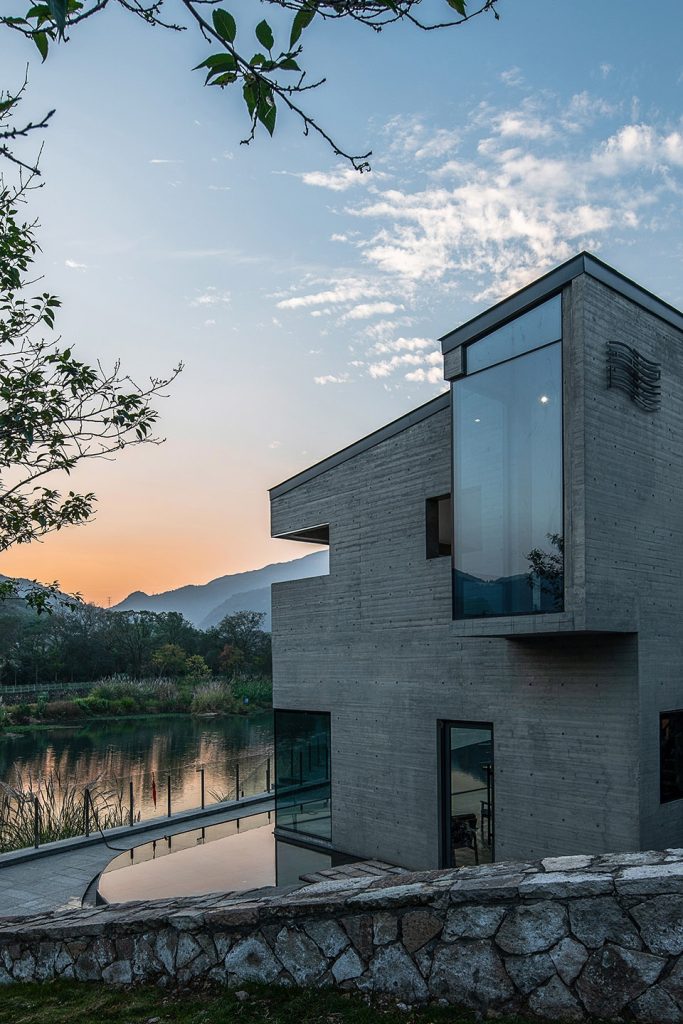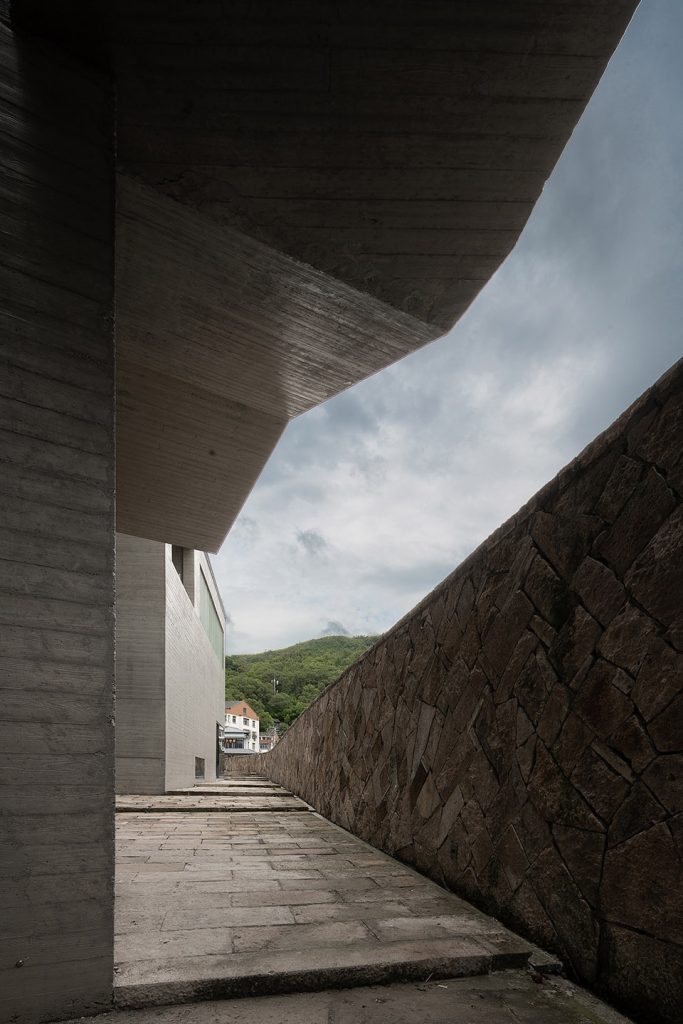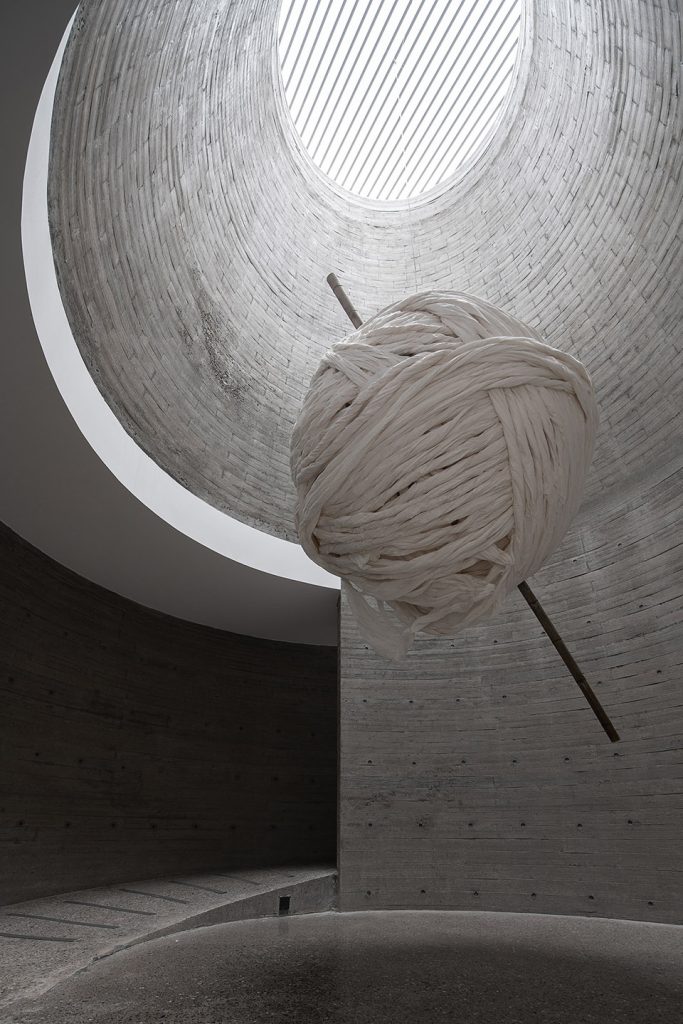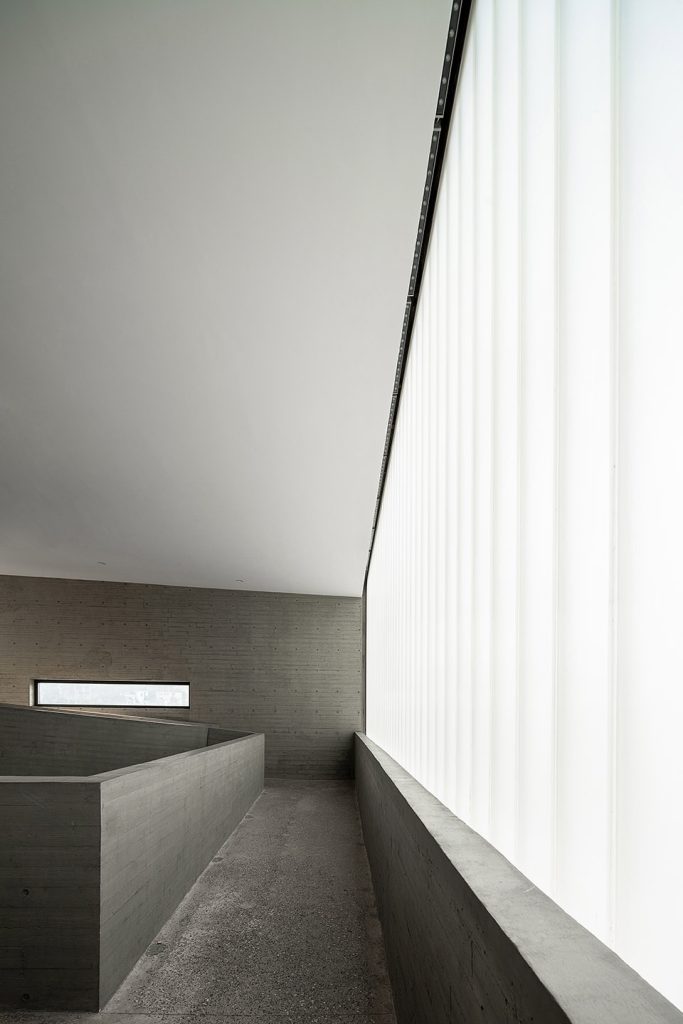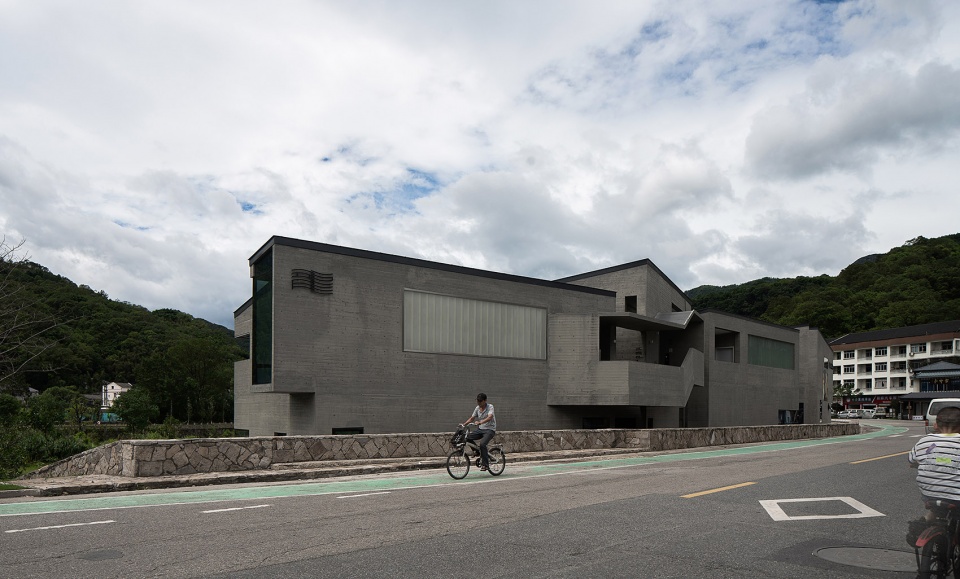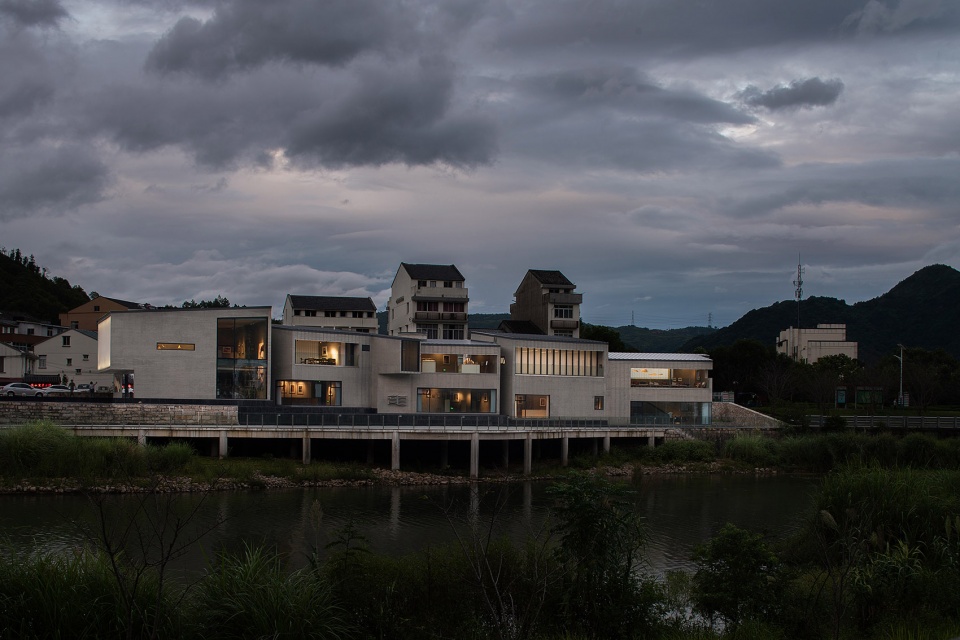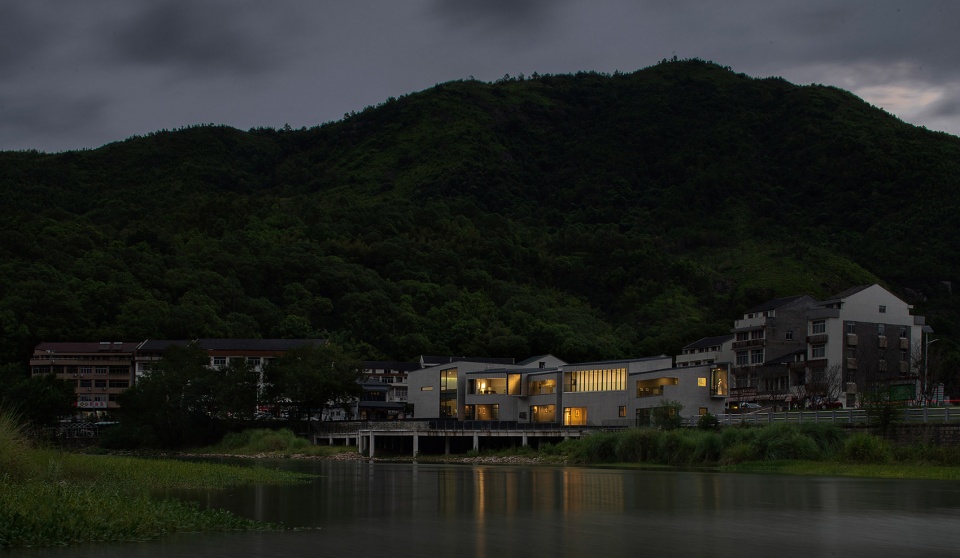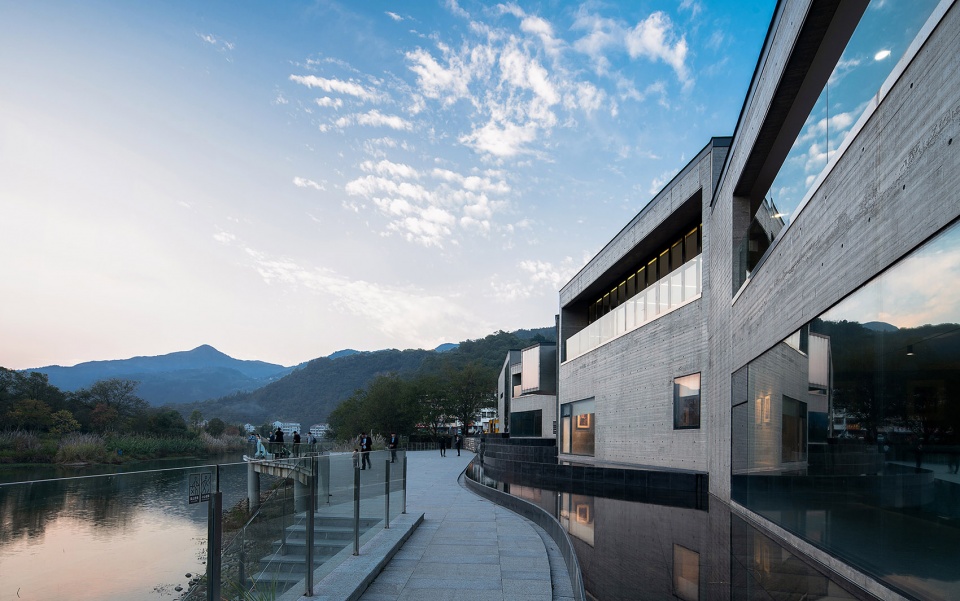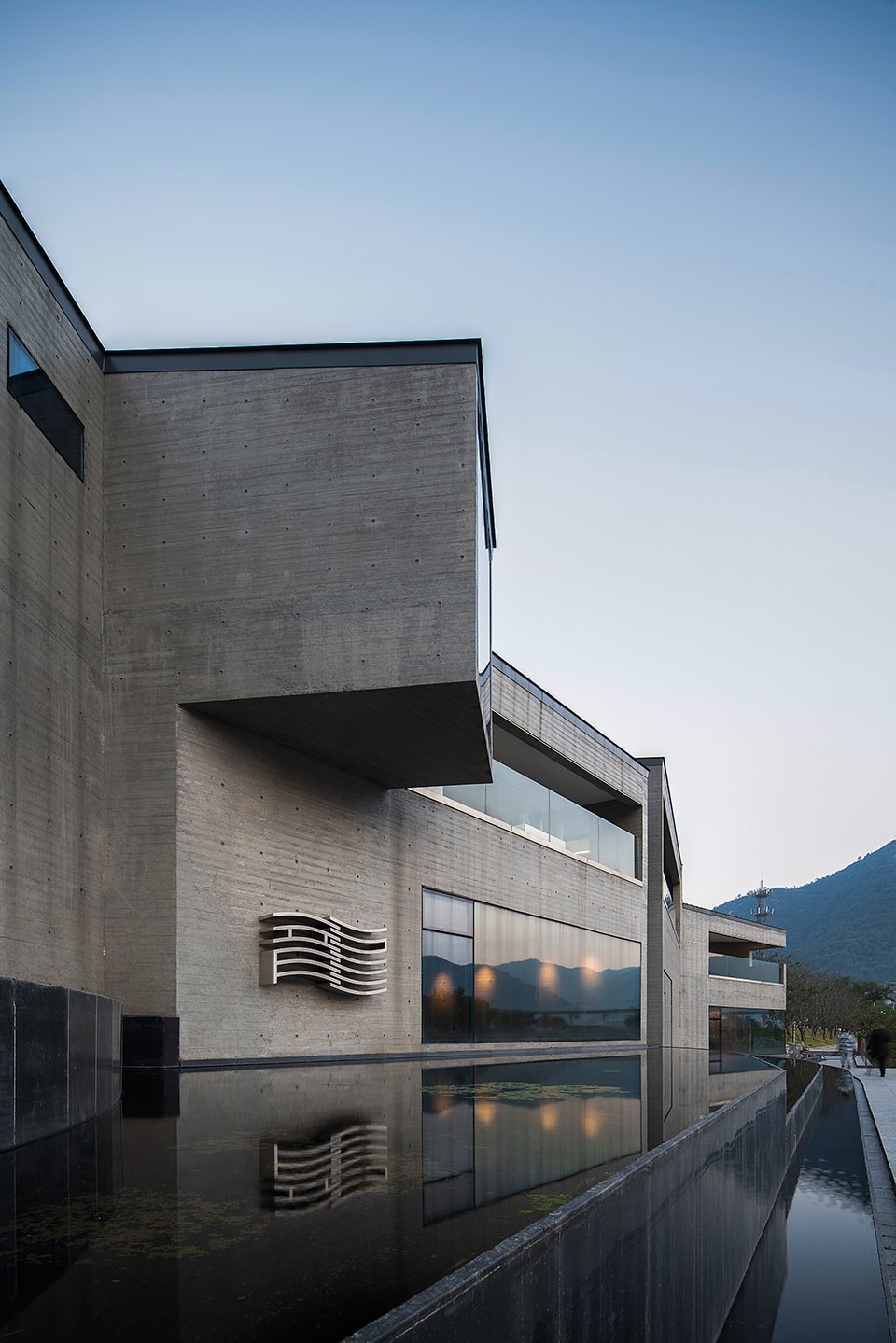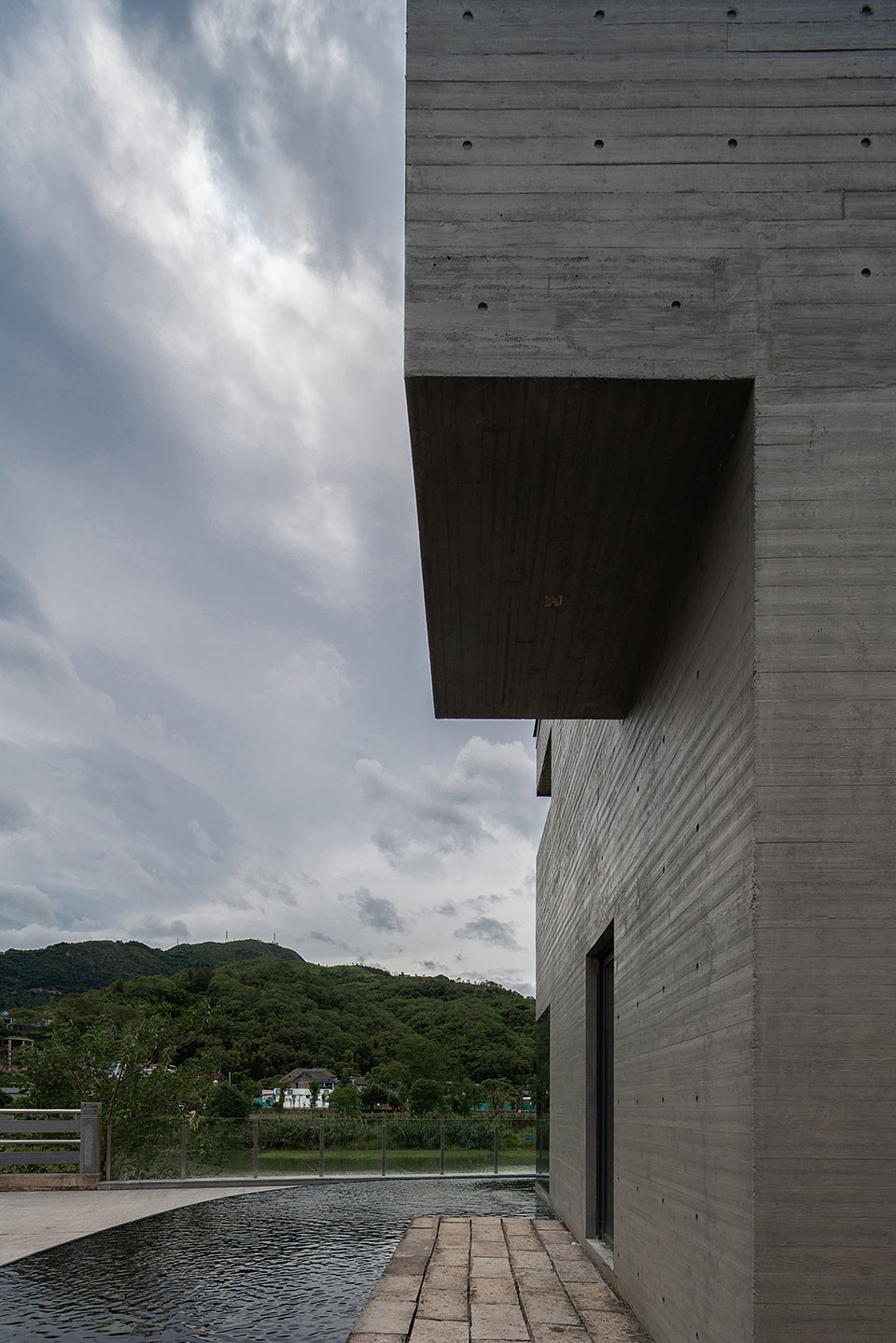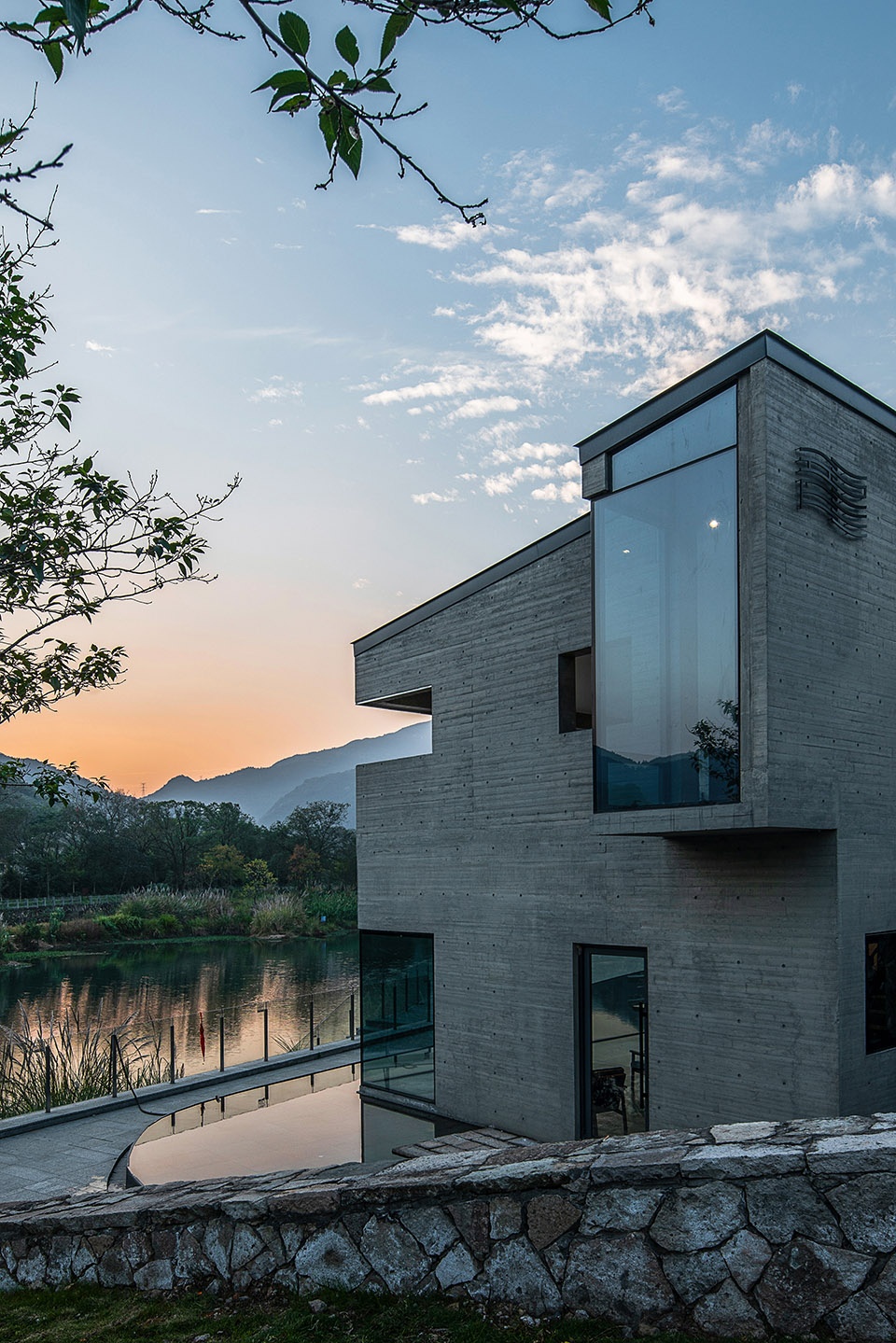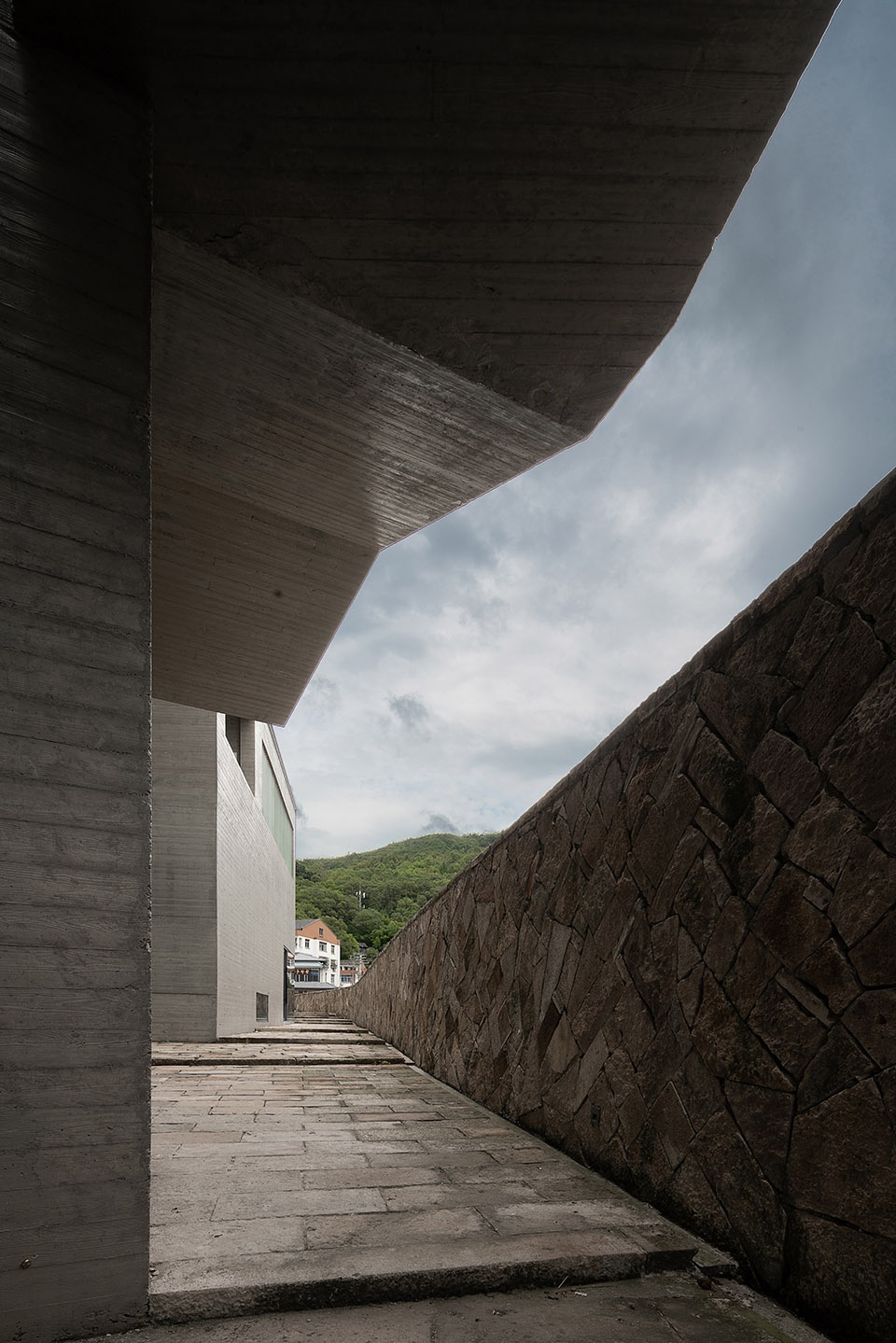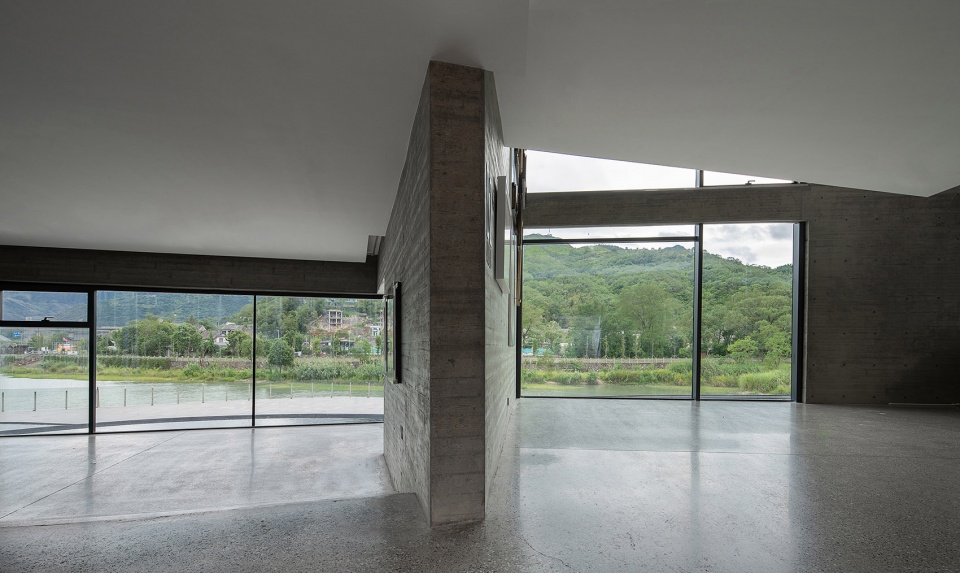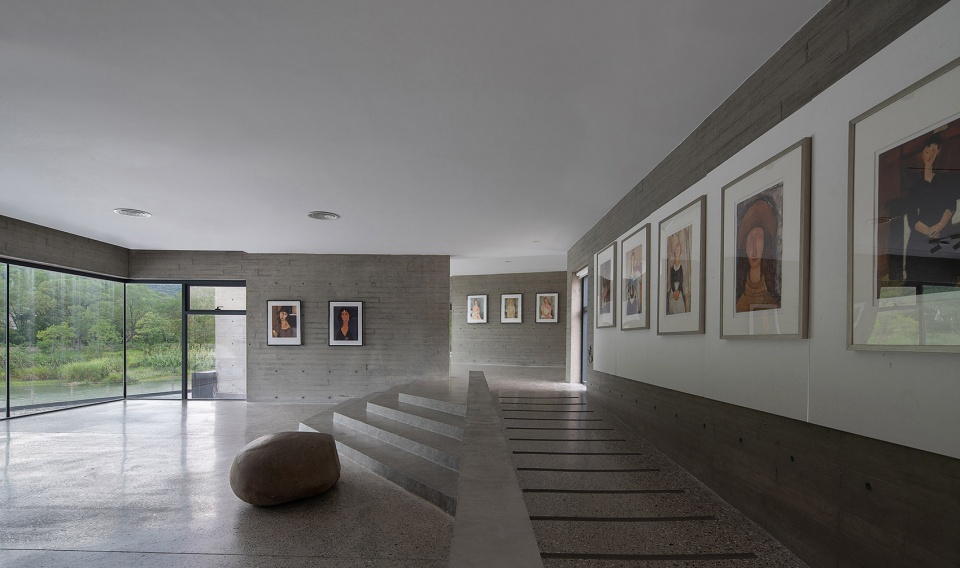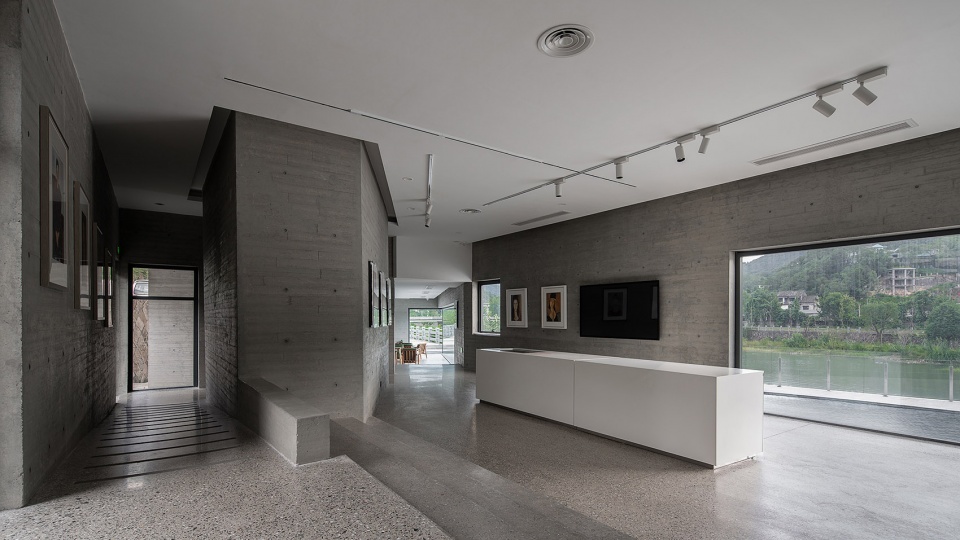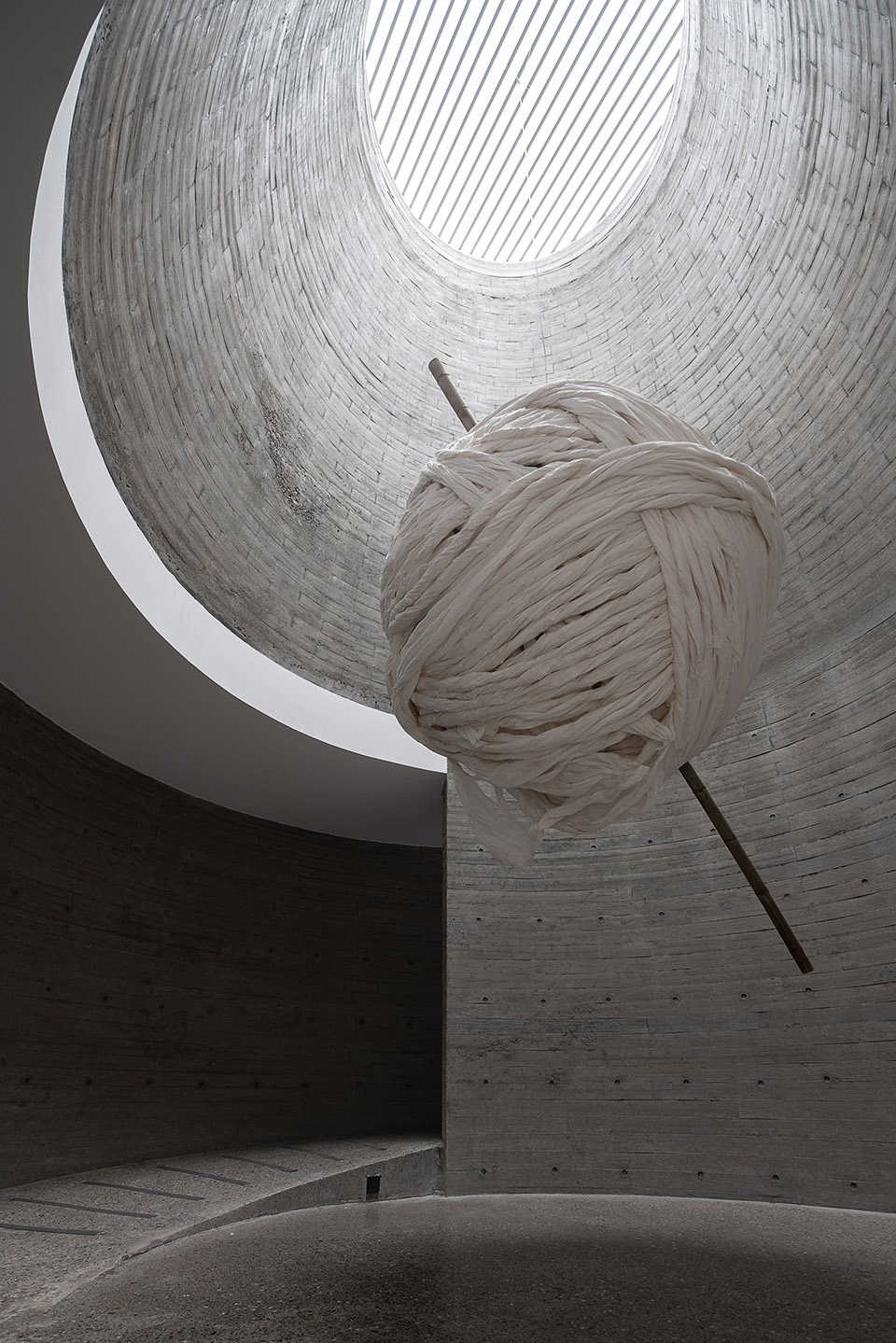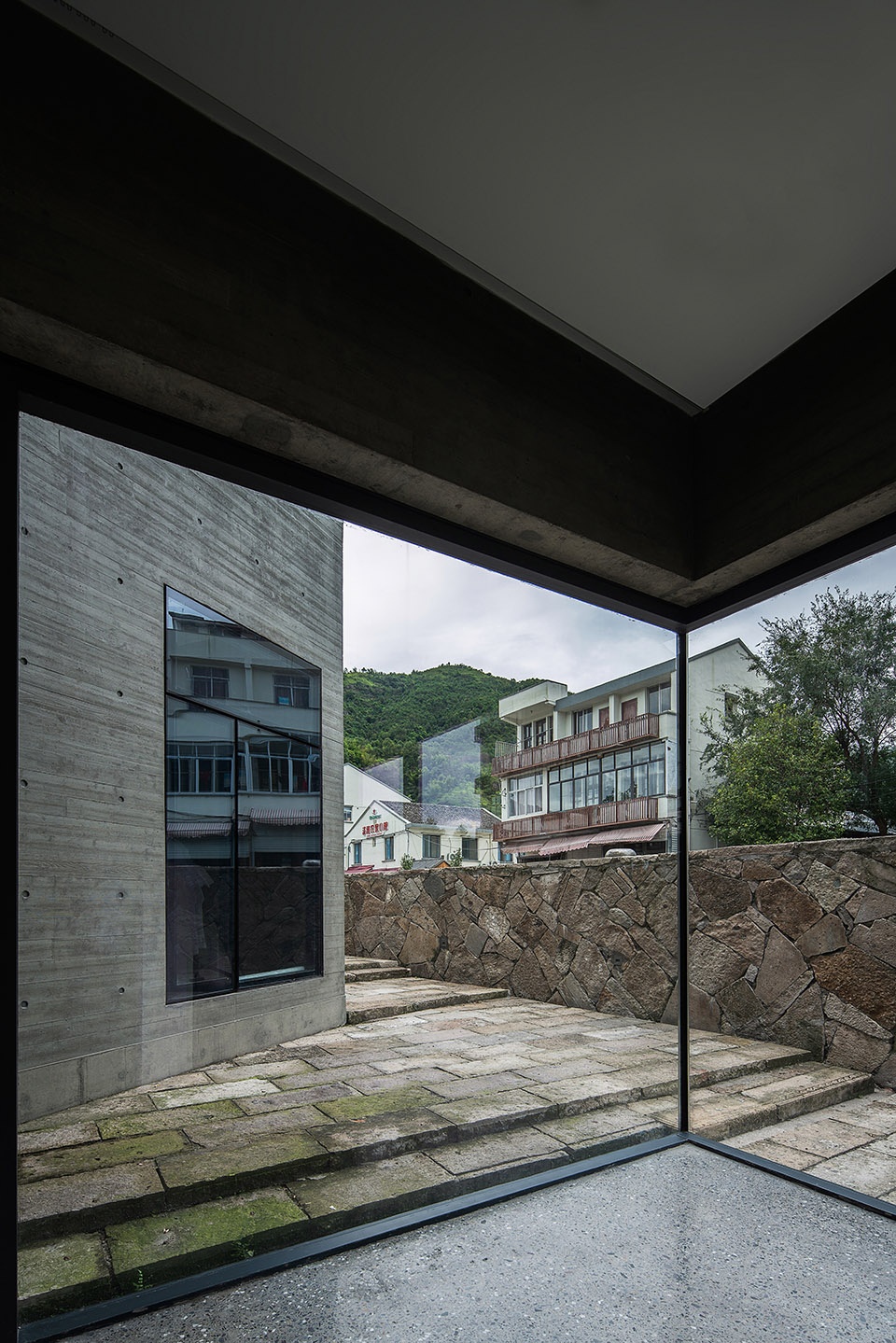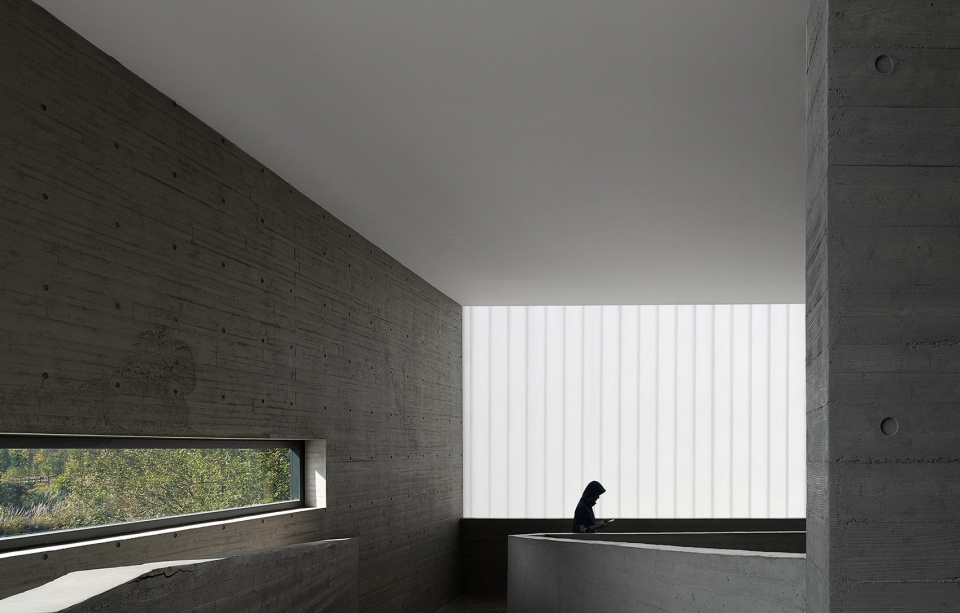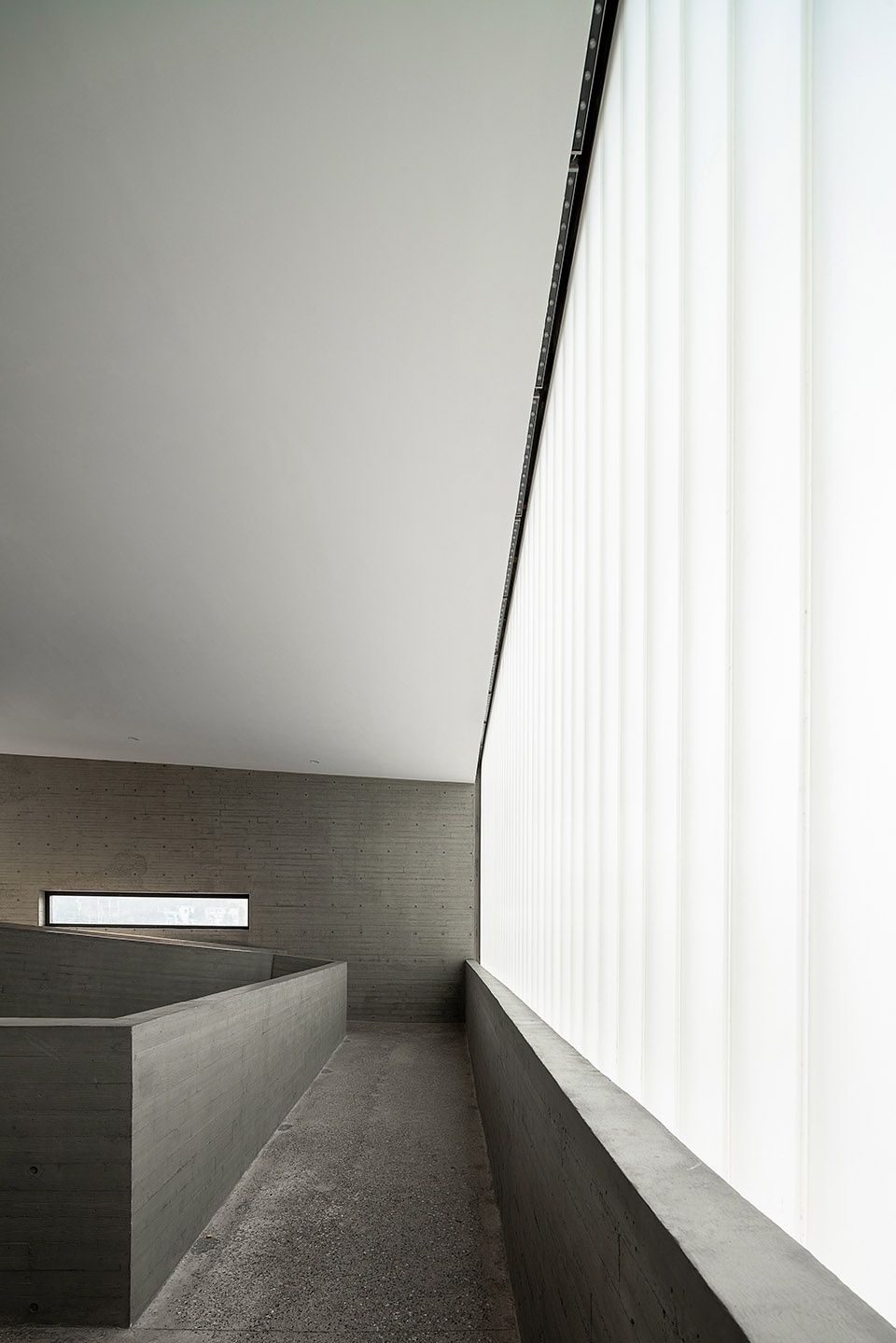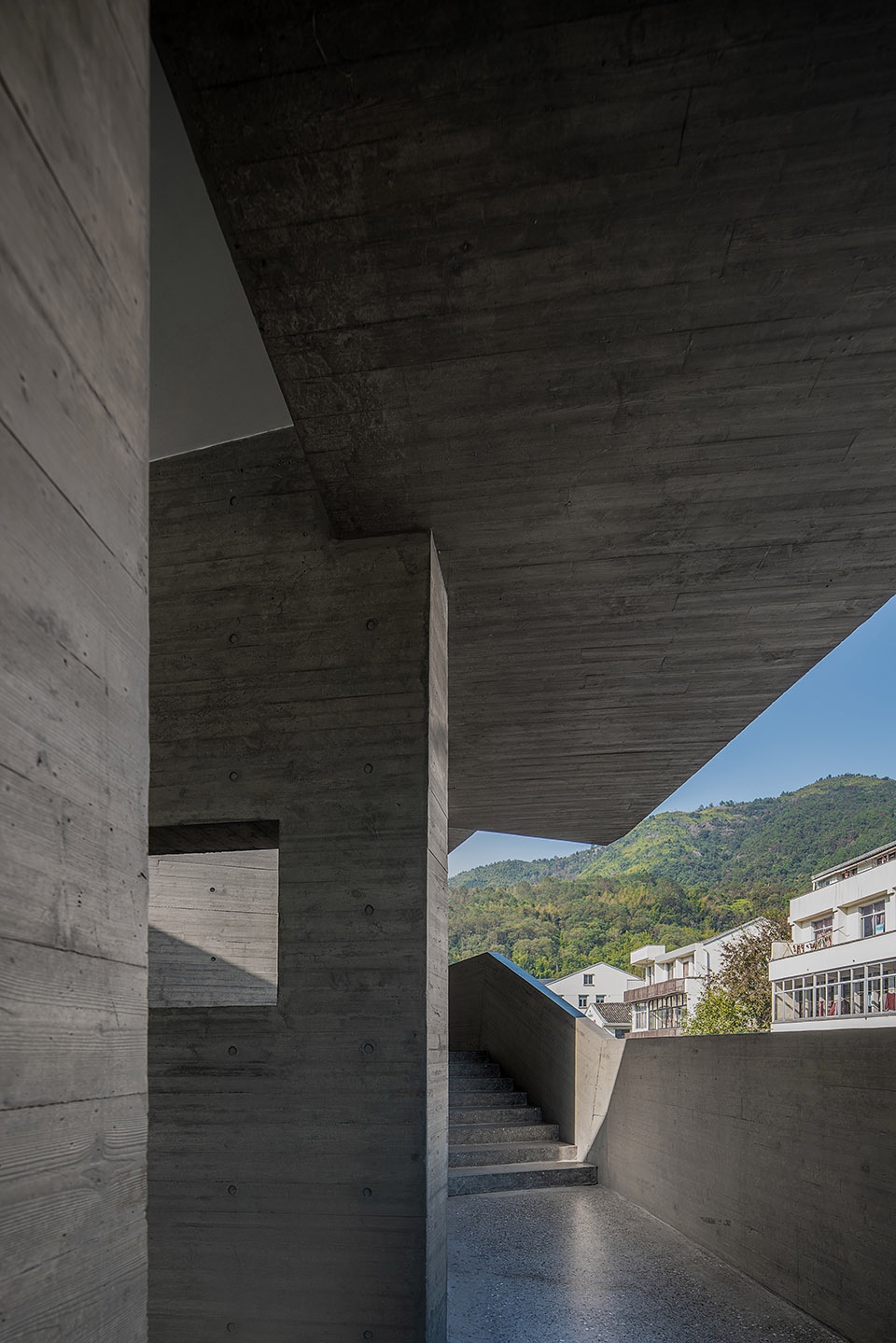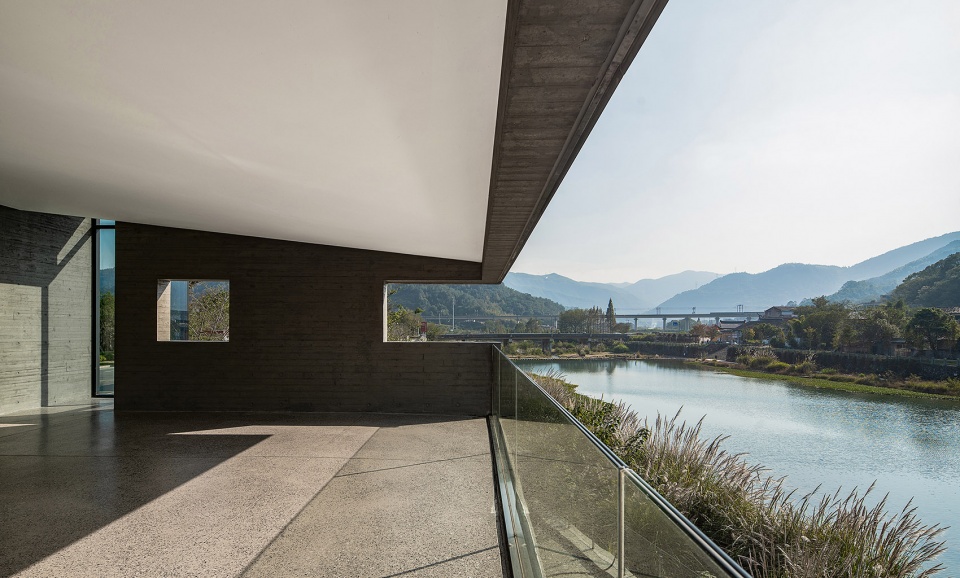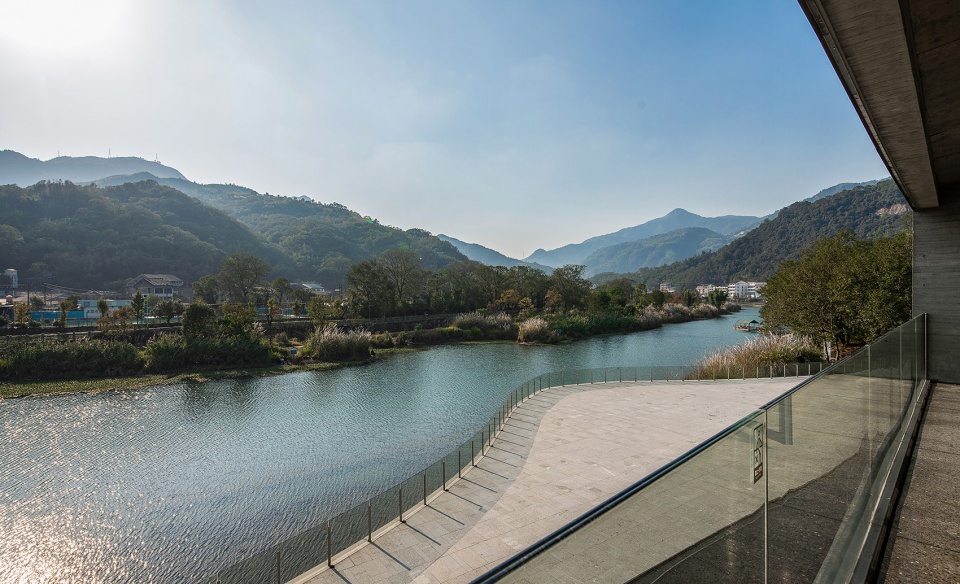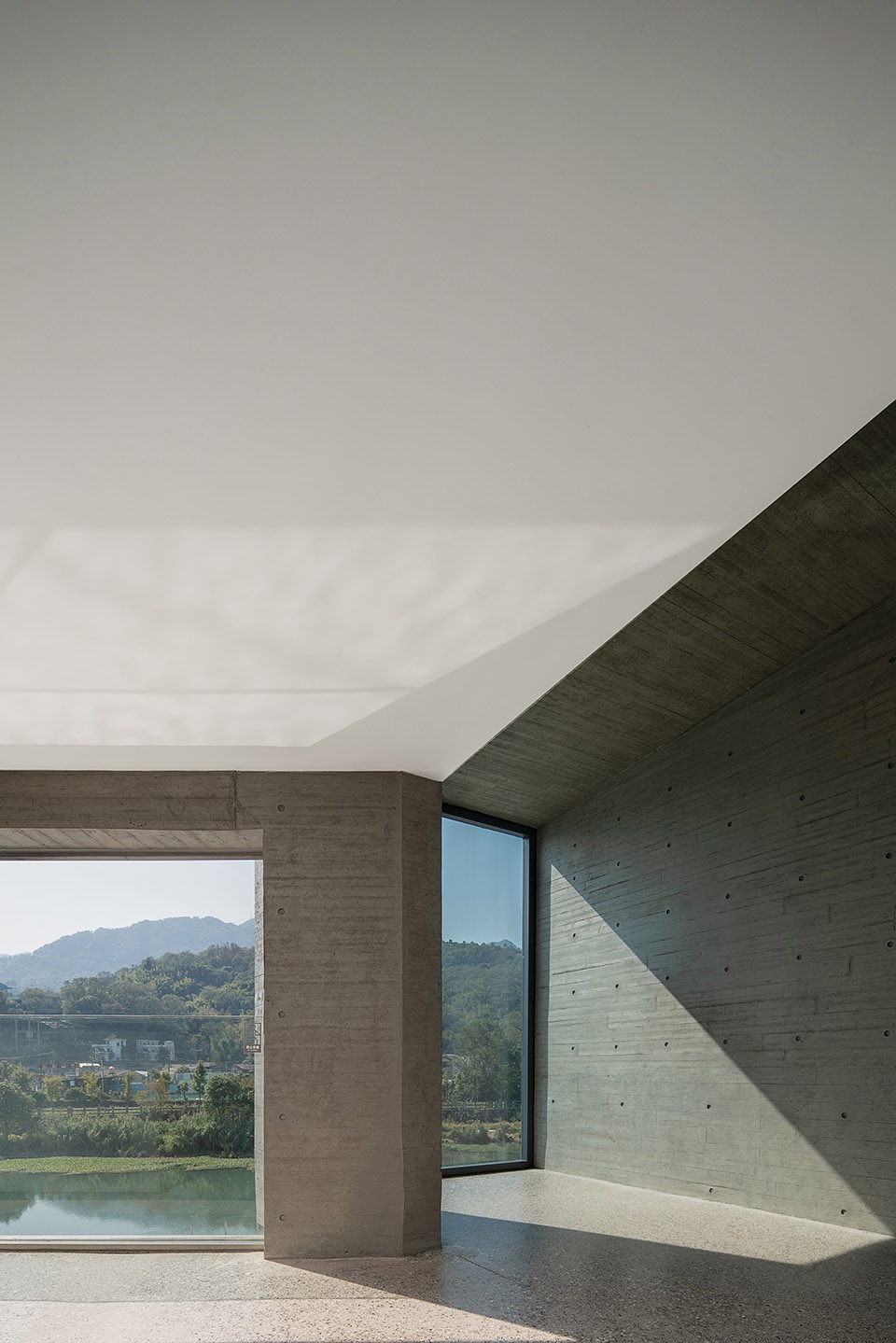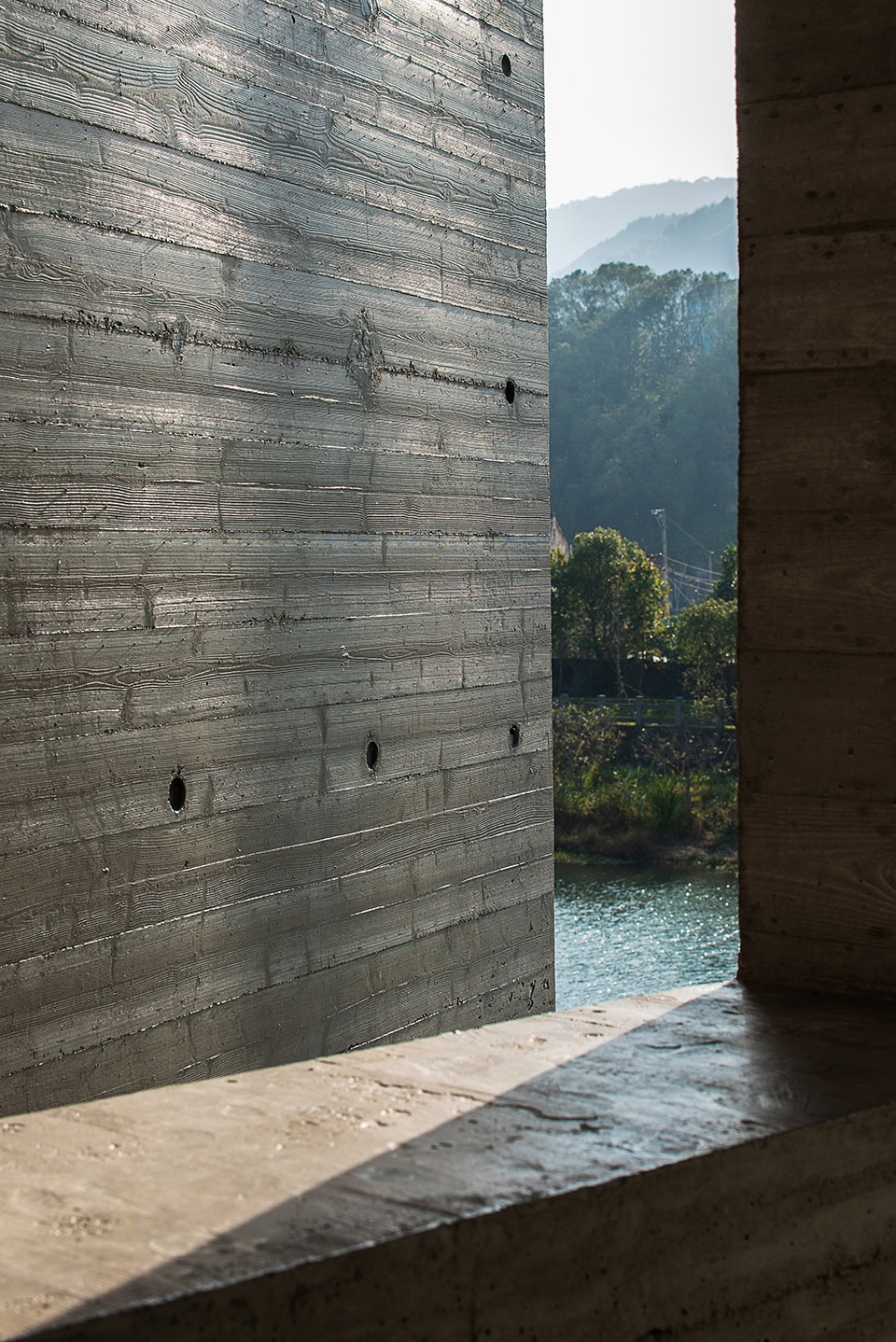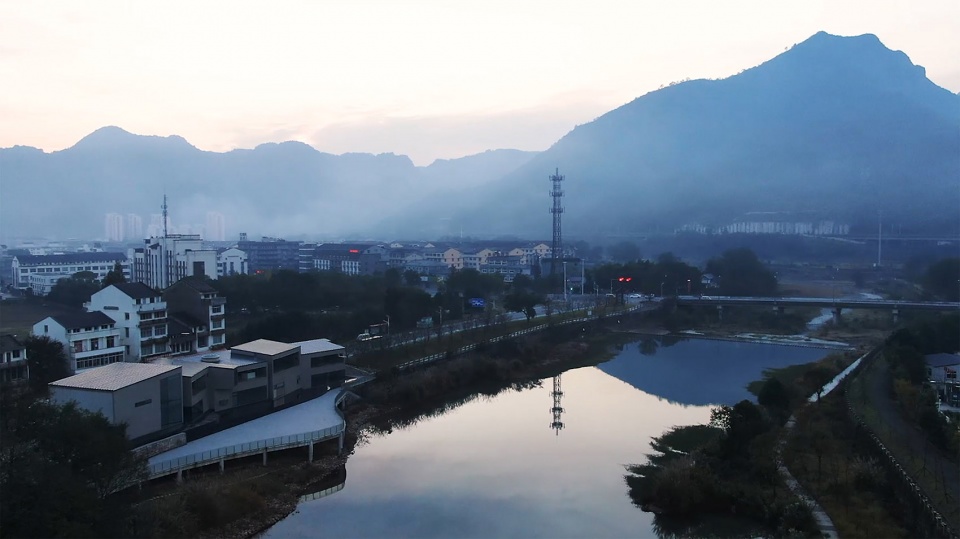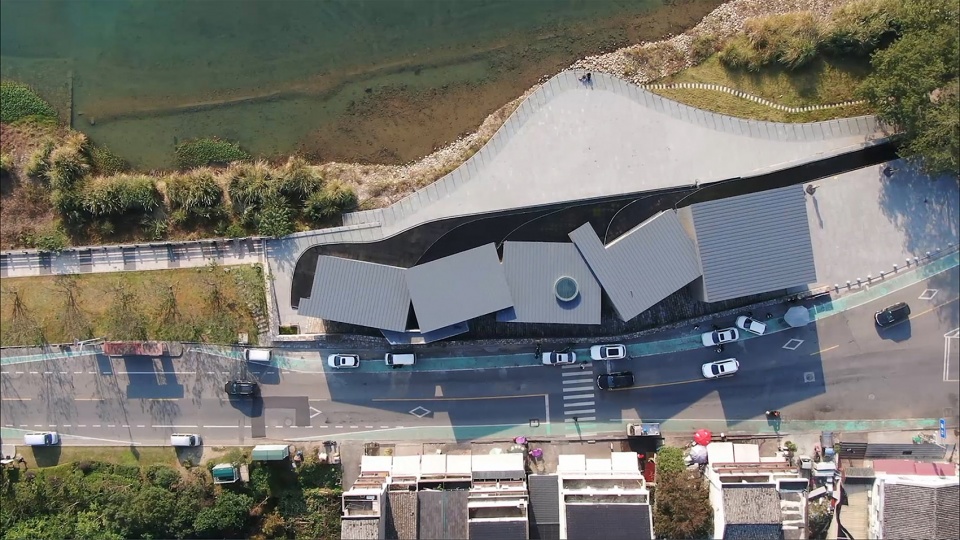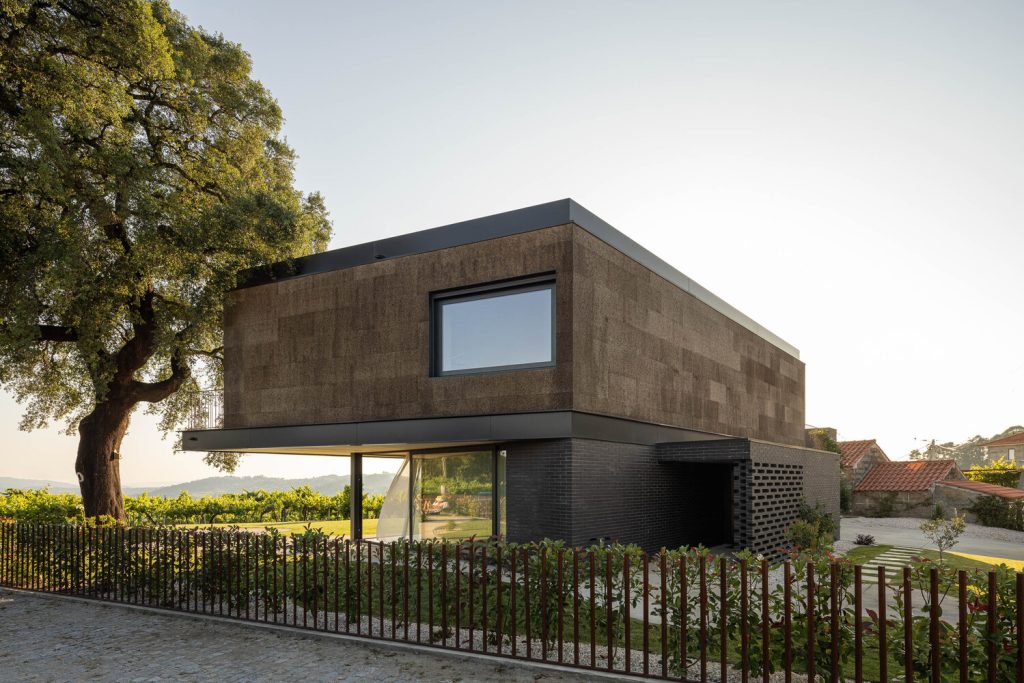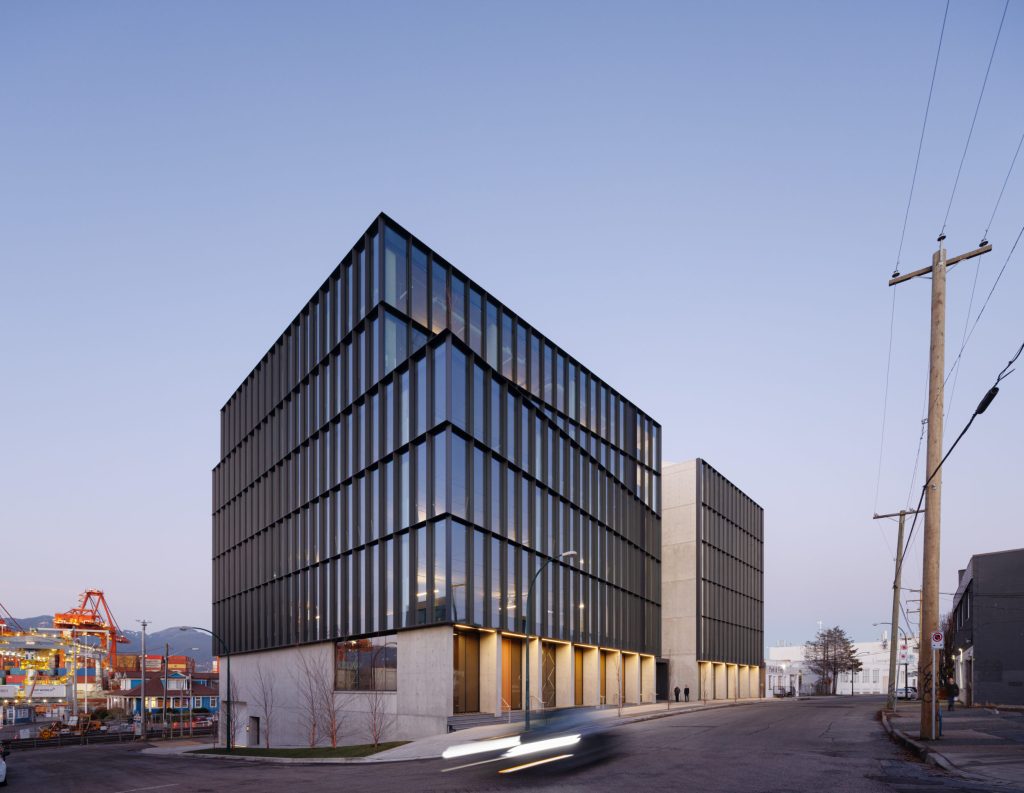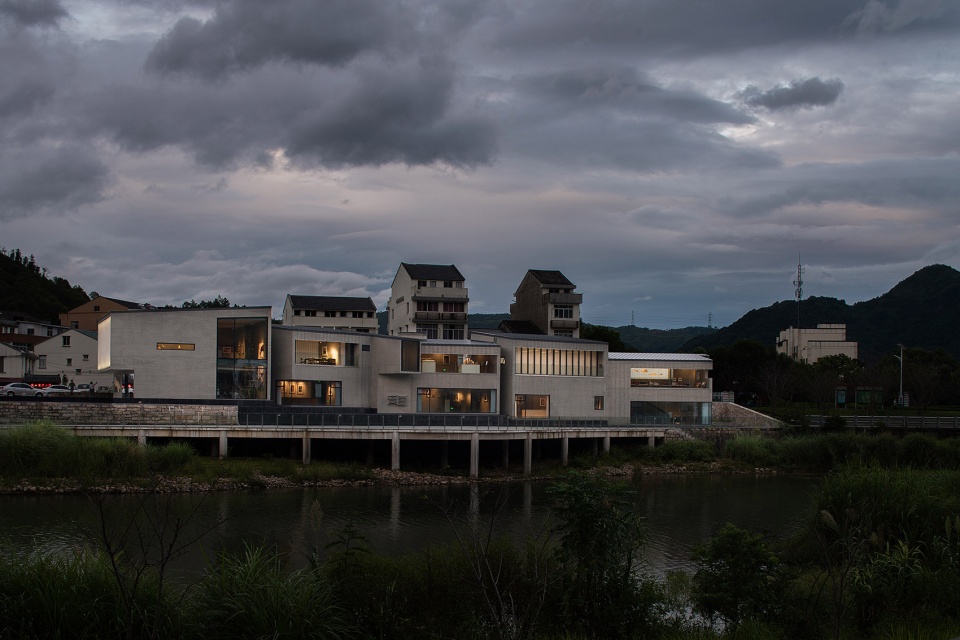
Zeya Longxi Art Gallery / FAX Architects
Zeya, in the west part of Ouhai district, in eastern China, is rich in historical and architectural heritage, with buildings dating back to the Ming Dynasty – ruling from 1368 to 1644 – and the Qing Dynasty, as well as craftsmanship heritage, with the oldest papermaking tradition in the world. In this considerable context, cradle of the most ancient Chinese culture, firm FAX Architects – founded in 2009 in nearby Wenzhou by Fang Chenguang – was commissioned to design an important Art Center, expected to interface with the town, with the goal of involving the inhabitants in the renewal of the local cultural network.
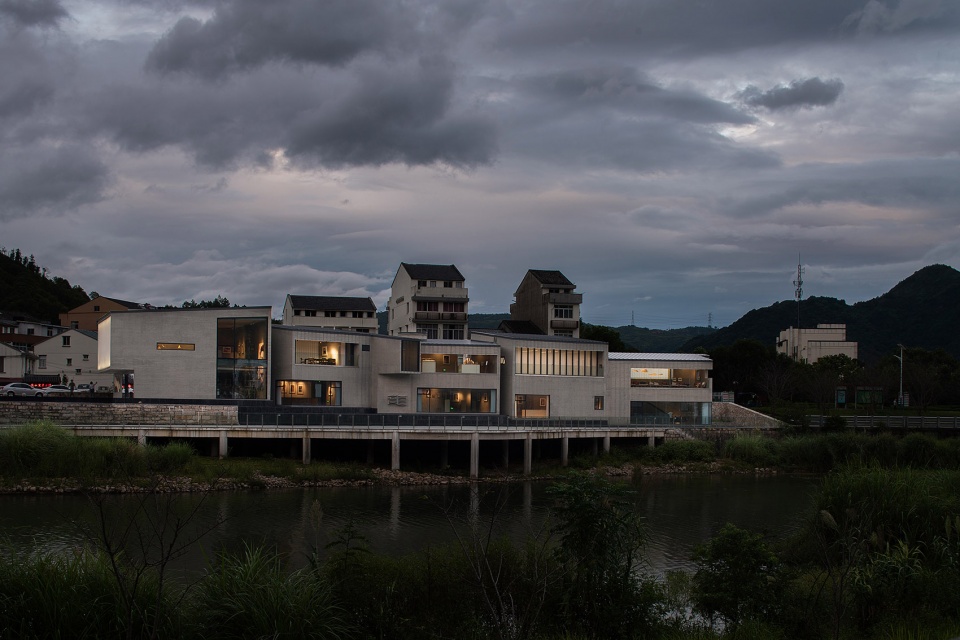

The land lot destined to the construction of the Art Gallery was long and narrow, closed between the banks of Longxi River to the west and the intersection of two major roads – Tongjing Road and Wenyuan Road – to the east. With these premises, the main focus of the designers was to establish a dialogue between the new construction and the river, the local buildings and the traditional activities, as well as to explore the critical relationship between life in the towns and the rural life in the villages.

Closed to the west by the banks of the Longxi River and to the east by two major roads, the ground of the plot destined to the construction of the new Zeya Art Museum was dug 2 meters underneath in order to form an important natural separation between the building and the roads and, at the same time, to preserve the visual connection between the river landscape and the ancient houses on the opposite side of the street. As to the architectural composition, the structure, named Longxi Art Museum in honor of the nearby river, is made up of a sequence of 5 interconnected volumes scattered along the shore, responding to the traditional construction culture of Zeya’s Quadruple Papermaking Workshop.
On the west side a water landscape and a waterside platform have been introduced, connecting the building with the original walking path, while a second path has been created on the east side, in the gap between the building and the wall that separates it from the roads. The three paths going through the site and wrapping the building provide a larger range of activities for tourists, local residents and visitors. The sequence of volumes ends in the south with a plaza and the main entrance to the gallery, while a secondary entrance has been created on the north side. From south to north, the volumes host on their two levels a series of functional areas, interconnected by ramps and stairways, such as the reception area, the exhibition galleries and the cafeteria.
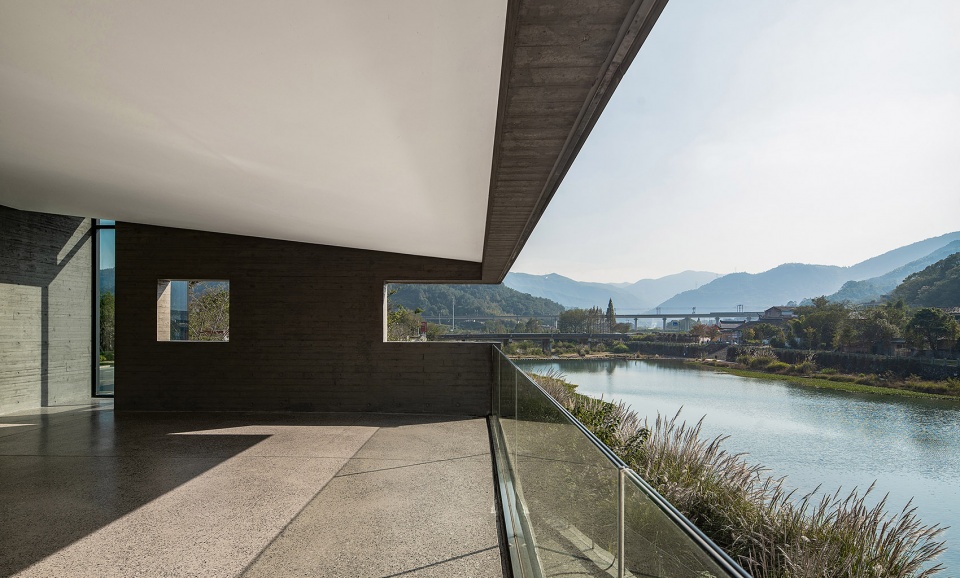
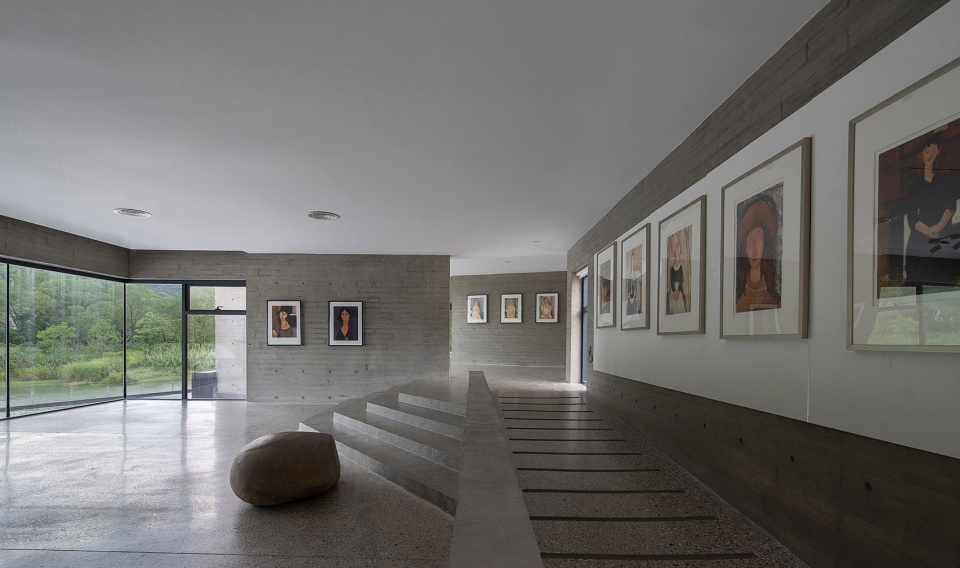
As to materials, given the scarcity of local stone in that area of China, the designers opted for the use of concrete as the main construction material. To improve the stability of the structure while ensuring the purity of the spaces, the designers have adopted for the building cast-in-place concrete with wooden formwork which has given the concrete walls a natural wood grain texture, further enhancing the dialogue between the building and the surrounding natural environment.
- Gross Built Area: 1074.7㎡
- Structural Design: Weng Huixi
- Electromechanical Design: Miao Kequan, Xie Maobo, Lin Xiangqian, Dai Guosen
- Landscape Design: Zhejiang Lvjian Architectural Design Co., Ltd.
- Lighting Consultant: Enke Zhuguang
- Signage Design: Jiaxuan brand design
- Construction: Zhejiang Vision Construction Group Co., Ltd.
- Project Manager: Xu Jianyong”
